The fascinating history of the modern calculator is a fascinating story of the development of a device that allows you to do mathematical calculations. It started with a mechanical calculator, which was expensive and cumbersome. It soon evolved into an electronic version that could add, subtract, and divide. It could also print out its results on paper tape and could fit into your pocket.
Gottfried Leibniz’s calculator
Gottfried Leibniz’s calculator was one of the most groundbreaking pieces of mechanical engineering at the turn of the seventeenth century. It performed all four basic arithmetic operations. It is now considered one of the most valuable cultural treasures of the period. Although Leibniz’s calculator was not an instant success, it did lead to a series of improvements in mathematical theory.
Leibniz began developing his calculator in the 1670s. He began with a conceptual design that he called a stepped cylinder. In 1675, he demonstrated his improved machine at the Academy of Sciences in Paris. On October 4, 1676, he took his further improved prototype to Oldenburg in London.
Babbage’s Analytical Engine
Charles Babbage invented the Analytical Engine, a mechanical general-purpose computer. The first version was described in 1837. Babbage intended to create a machine that would be easier to use than a traditional mechanical calculator. His Analytical Engine combines many of the functions of a computer in one machine.
The Analytical Engine had two parts, the lower level was controlled by massive drums (called barrels) and the upper level was controlled by punched cards. The earliest machines also had a nested loop system and used Jacquard’s Bernoulli numbers.
Texas Instruments
Historically, calculators have undergone seven major transformations. These include portability, a small form factor, replaceable batteries, increased functionality, liquid crystal displays, solar power, and cheapness. The first electronic calculators appeared in the 1960s. These early calculators used transistors to calculate numbers.
Early calculators were made of mechanical parts. However, they quickly became inefficient and time-consuming. As a result, mathematicians began developing new devices to perform calculations. The British Bell Punch/Sumlock Comptometer ANITA was one of the first electronic calculators. This machine was used to calculate the fares for train conductors. The British company created a calculator that had twelve cold-cathode tubes. This device was available as early as 1962 and was sold in continental Europe.
Hewlett-Packard
In the early 1970s, HP engineers began developing a calculator that was less power-hungry, incorporated transistors, and used mains power instead of batteries. Their ‘Cal-Tech’ prototype was a prophet of the future, but it still used transistors. By the end of the decade, calculator development had moved to the forefront of Large Scale Integration (LSI) semiconductor development. As the technology progressed, strategic partnerships were formed with Japanese calculator manufacturers and U.S. semiconductor firms.
In 1957, Hewlett-Packard began selling public stock to raise money to expand its production and sales efforts. After going public, the company began expanding its product line and made significant strides towards a more profitable future. In 1961, the company bought the F.L. Moseley Company, which manufactured graphic recorders. In addition, the company began its ascent to the status of a medical-instrument manufacturer.
Sharp
The earliest calculators were made with a nematic black-on-grey crystal display. However, later models had an LCD screen. They were often more expensive and didn’t last long. Then, in the 1970s, Sharp started making calculators that used a “Calculator On Substrate” (COS) technology. This technology used an extension of a glass plate to display a liquid crystal. This technology proved to be too expensive and eventually Sharp went back to using conventional circuit boards.
During the 1960s, the first electronic calculators came on the market. The Sharp CS10, an all-transistor calculator, cost $2,500 in 1964. This breakthrough opened the door for new electronic calculators by Sony, Olivetti, Canon, and Mathatronics. The Toshiba BC-1411, another early electronic calculator, was a breakthrough in computing history. The Toshiba BC-1411 was able to store more information than its predecessors. It also incorporated an early form of RAM, and had separate circuit boards. The Olivetti Programma 101, another early electronic calculator, was a winner of numerous industrial design awards.
ENIAC
The modern calculator owes its origins to the development of electronics. Throughout the 1970s, the invention of integrated circuits (ICs) allowed the calculator to perform all its logic functions within a single device. This new technology was cutting edge at the time, but yields were low and costs were high. Even so, many calculators used multiple ICs to perform basic operations, and this trend continued well into the 1980s.
The first calculator was invented in 1623 by a German astronomer and mathematician, Wilhelm Schickard. He described his creation in a letter to Johannes Kepler. Unfortunately, the prototype was destroyed during a fire. However, modern engineers were able to reconstruct it from Schickard’s letters.
